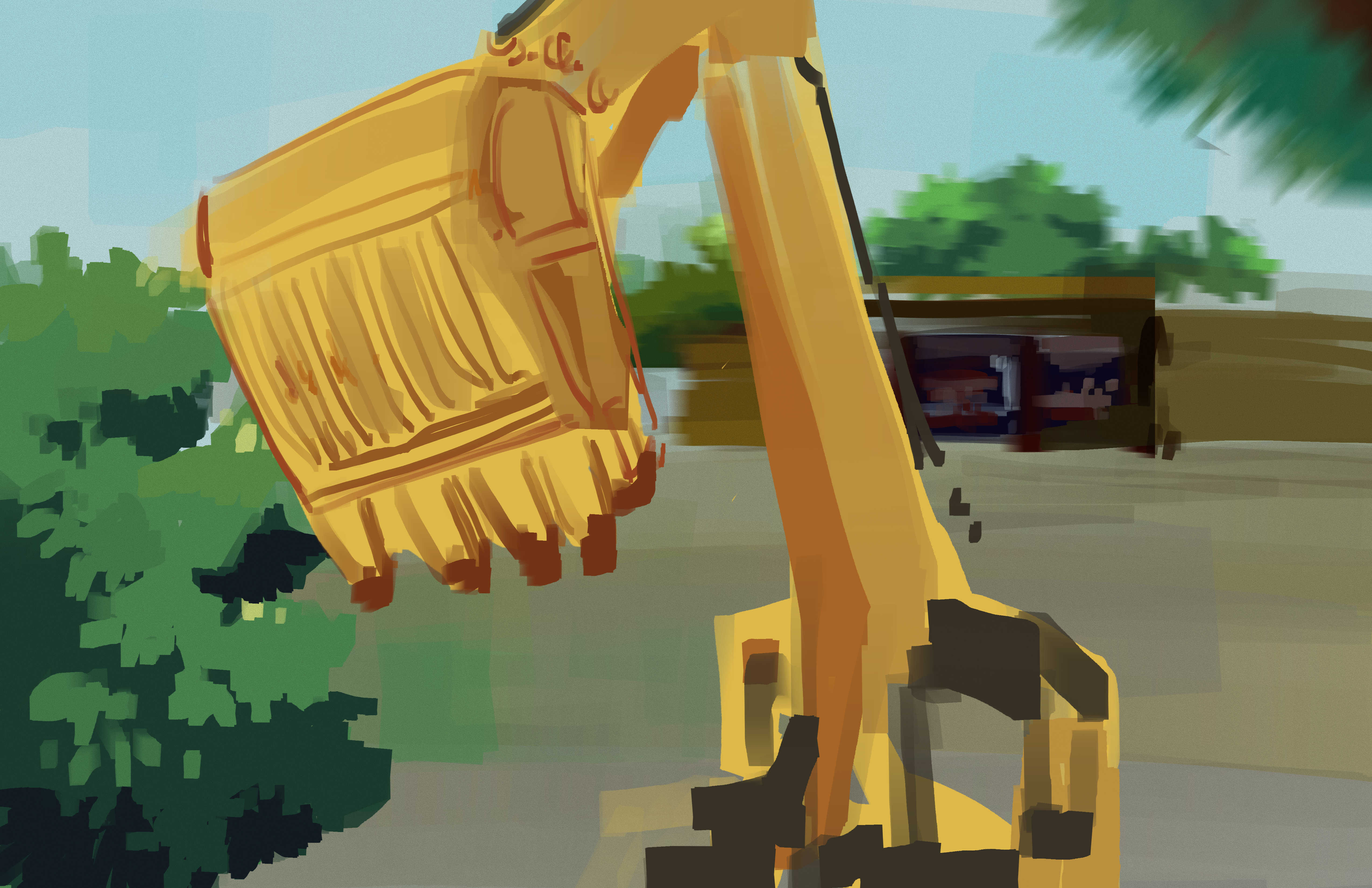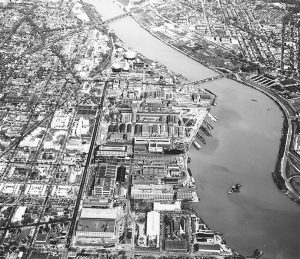At 1617 U St., a two-acre parcel of public land sits at the center of a dispute between the local community and two government agencies. Though the debate centers on a simple question of rezoning, it’s archetypal of a difficult issue long plaguing D.C.—how to create more affordable housing while balancing development and displacement.
Against neighbors’ wishes, the Office of Planning (OP) and the Office of the Deputy Mayor for Planning and Economic Development (DMPED) are trying to rezone the property location, which would allow larger buildings, including luxury housing units, to be built on the site.
Currently home to an active police and fire station, the lot is nestled among residential buildings along the 16th Street Historic District. DMPED’s 2021 Comprehensive Plan envisioned this parcel of land as “high density mixed-use,” or any type of development from residential high-rises to luxury lofts. Despite the plans to rezone, DMPED does not currently have a concrete plan for the land, although they have promised the community the public safety services headquartered at 1617 will remain there regardless of what else is added to the lot.
In line with this vision, the OP is pushing for the site to be upzoned from its current MU-4 zoning to a higher MU-10 zoning, allowing for the eventual structure at the site to be 90 feet tall—a 40-foot jump from the current zoning restrictions. But residents believe the proposed rezoning could allow for luxury development on the lot that would raise the area’s rent prices, leading to the displacement of current U Street residents. Gentrification is a concern for many residents of the U Street Corridor as developers look to the neighborhood to build luxury housing, like the Ellington apartment building on 13th Street, that attracts wealthy newcomers.
Although zoning laws can be a mundane issue, the proposed upzoning has incited fierce opposition from neighbors and community groups. The pushback centers on concerns about gentrification and the height of the proposed zoning, which critics say could appear out of place with the historic nature of the neighborhood.
One main point of contention: how the OP and DMPED have conducted the zoning process. Neighbors and community members feel as though both offices have shirked their responsibility to sufficiently engage the community.
Gregory Adams, who lives on 17th Street, a couple of blocks away from the proposed rezoning site, is one of these neighbors. Adams represents Black Neighbors of 1617 U Street, a key party in opposition to the rezoning.
He described going door-to-door to inform his neighbors after he heard about the proposed project via the “neighborhood grapevine.”
“I heard the same thing from everybody: that they had not been contacted by anyone. Some of my neighbors are older than I am,” Adams, who is in his 70s, said. “These are not people who are going to go out to [Advisory Neighborhood Commission] meetings, they’re not people who are going to go online to do Zoom meetings, but they will talk to people face-to-face, and there had been no outreach to any of them.”
DMPED has participated in over a dozen meetings with the Advisory Neighborhood Commissions (ANC) representing or bordering 1617 U St. The OP also presented at ANC meetings in October and November of last year. A representative wrote in a statement to the Voice that it has “conducted outreach in accordance with the Zoning Commission’s Racial Equity Tool.”
That tool requires that rezoning applicants engage in community outreach to understand the potential impact of the new zones on issues like housing affordability and resident displacement—both of which have a disproportionate effect on people of color in D.C.
D.C. Zoning Commission Chairman Anthony Hood oversees the public hearings for the zoning case, where government officials and residents have discussed the potential plans for the site. Hood noted the OP’s lack of outreach to residents at the Jan. 18 hearing.
Many community members also agree that this outreach is insufficient.
“No meaningful outreach, such as producing flyers, canvassing, social media engagement, and posting hearing notices, was conducted with our church,” wrote the Freedom Baptist Church, which is roughly two blocks away from the site, in their opposition letter to the Zoning Commission.
Deborah Akel, who has lived at 1603 U St. for the last 15 years and shares the property line with the lot, feels similarly. Although the OP provided notice to the property owner of her building (the office is required by law to notify properties within 200 feet), her landlord didn’t pass this notice on to her. She described reaching out to the city herself to set up opportunities to learn about the rezoning.
“I had to instigate these meetings. I had to organize them myself,” Akel said.
Other opposition parties also cited a lack of outreach and, despite DMPED’s aggressive goals around affordable housing, a lack of faith that the city will use this public land to create more affordable housing.
“To date, details have been held back, impact studies have not been conducted, and thus potential impacts have not been identified for mitigation, and a long-term vision has not been discussed with affected residents,” the Shaw-Dupont Citizens Alliance wrote in a letter to the Zoning Commission.
After a similar project raised property values, the landlord of Akel’s rent-controlled building in West End sold the building. That sale displaced Akel from her previous residence of 15 years, and she now expresses serious concerns about the parallels between her experience of displacement there and the proposed project at 1617 U St.
“I think that this could transform the U Street Corridor and lead to a lot of displacement,” she said. Other U Street Corridor residents expressed similar concerns.
DMPED maintains that although the rezoning process is currently underway, there is no concrete vision for the use of the land because they have not yet finished the Request for Proposals (RFP) process—a process that allows for community input on new developments. As a result, there’s no knowing what could even be built there in the first place.
“We are still in the very early planning phases of this project, and significant community input and engagement is still to come,” DMPED wrote in a statement to the Voice.
In response to similar statements from DMPED, Akel and several others question why rezoning is even necessary.
“Zoning keeps saying, ‘There’s no project,’ but then why do you need MU-10 if there’s no project? Why are you asking for maximum height and density if there’s no project? Why are you putting the cart before the horse?” Akel said.
Andria Chatmon, an organizer with Empower DC, an organization that advocates for affordable housing in D.C., has been collaborating with neighbors who oppose the project to bridge some of the alleged gaps in the OP’s outreach through direct community engagement work. She has talked with residents like Akel and Adams who fear displacement, as well as those who express concern about what upzoning might do to the historic character of the neighborhood.
These myriad concerns take place against the backdrop of the historic displacement from property development in D.C., especially for the District’s Black residents.
Peter Tatian, a research fellow at the Urban Institute whose work focuses on housing policy and affordable housing preservation, published a report after the release of the 2020 Census that showed a 3.8% decrease in D.C.’s Black population over the last decade.
“Displacement of Black residents from D.C. is something that’s been happening for a long time. It actually started in the late ’60s and has continued to this point,” Tatian said in an interview with the Voice.
Since its peak in 1970, the Black population of D.C. has decreased by over 240,000 residents. By the end of the 1990s, economic factors exacerbated by gentrification made D.C. increasingly unaffordable to existing Black communities.
“[Black residents] face more displacement because of new developments and rising costs,” Tatian said. “Many Black residents in D.C. don’t have the means, the income that allow them to stay.”
The median income for Black D.C. residents is $49,652. With median rent prices above $2,000 per month, market-rate housing in the city is often unaffordable. White D.C. residents, on the other hand, earn a median income of $149,734, making them less likely to be displaced by rising costs of living.
Adams has lived on 17th Street for the last 40 years and said she has witnessed this trend firsthand.
“This was a thriving Black community when I moved here in ’84, and here in 2024 I am the last Black household on our block,” Adams said.
“As James Baldwin said in a 1960 speech, ‘urban renewal means Negro removal,’ and that has always seemed to play out, whether intentionally or not,” he added.
The potential for new luxury developments as a result of the 1617 U St. rezoning is especially worrisome for a community that has already experienced changing neighborhood demographics as a result of rising rent.
“I don’t know all the reasons why the neighborhood has changed. I do know that some of my neighbors were forced out because of rising rents, and I don’t see how a new development on that site would correct that. I don’t see how it doesn’t exacerbate it,” Adams said.
Dr. Tanya Golash-Boza, a D.C. native, professor of sociology, and founder of the Racism, Capitalism, and the Law Lab at the University of California, Merced, submitted an expert testimony to the Zoning Commission about the case. In her statement, she detailed five instances where other parts of D.C. saw a significant decrease in Black residents following a change to the MU-10 zoning designation.
“[T]he area in the West End near 24th and M, which had a few hundred Black residents 15 years ago [has] no Black residents today,” Dr. Golash-Boza wrote in her testimony. “An area in Navy Yard was also upzoned in this way. This area was nearly all Black before the public housing was demolished, and is only 10% Black today.”
Although there are currently no residential properties at 1617 U St., many residents are calling for more affordable housing to be built there to prevent further displacement.
“If the government could take land from Black people and transform it into public land, there is no reason it can’t take this lot of public land and transform it into a place where Black people can live and thrive,” Dr. Golash-Boza wrote.
Community members have proposed constructing social housing on the lot, a type of development that offers a variety of affordable price points for tenants who may not be able to afford traditional housing units.
The spread of social housing has gained traction in the District recently. In 2022, Ward 4 council member Janeese Lewis George introduced a bill to mandate social housing prices in one-third of all new properties.
Several residents expressed their support for this idea at a public Zoning Commission hearing on Feb. 12, as well as through written testimonies submitted throughout the public hearing period. Hood said at the hearing that the Commission has been discussing the possibility.
“The Zoning Commission has already been having conversations [with] Councilwoman Lewis George about social housing, so I want you to know that we’re not just sitting back asleep,” Hood said. “She and I have spoken about that on a number of occasions, and how we can institute it.”
Over one in 10 D.C. residents are facing housing insecurity, mainly due to unaffordability and inadequate housing. Many neighbors of 1617 U St. feel that the District now has an opportunity to build more equitable, affordable housing there so that fewer people are forced to move by rising housing prices in the future. Adams, for one, sees the potential for the lot.
“Since there’s no housing there now, if you’re going to put housing there it should be in-scale first of all, and it should be really affordable housing,” he said.





